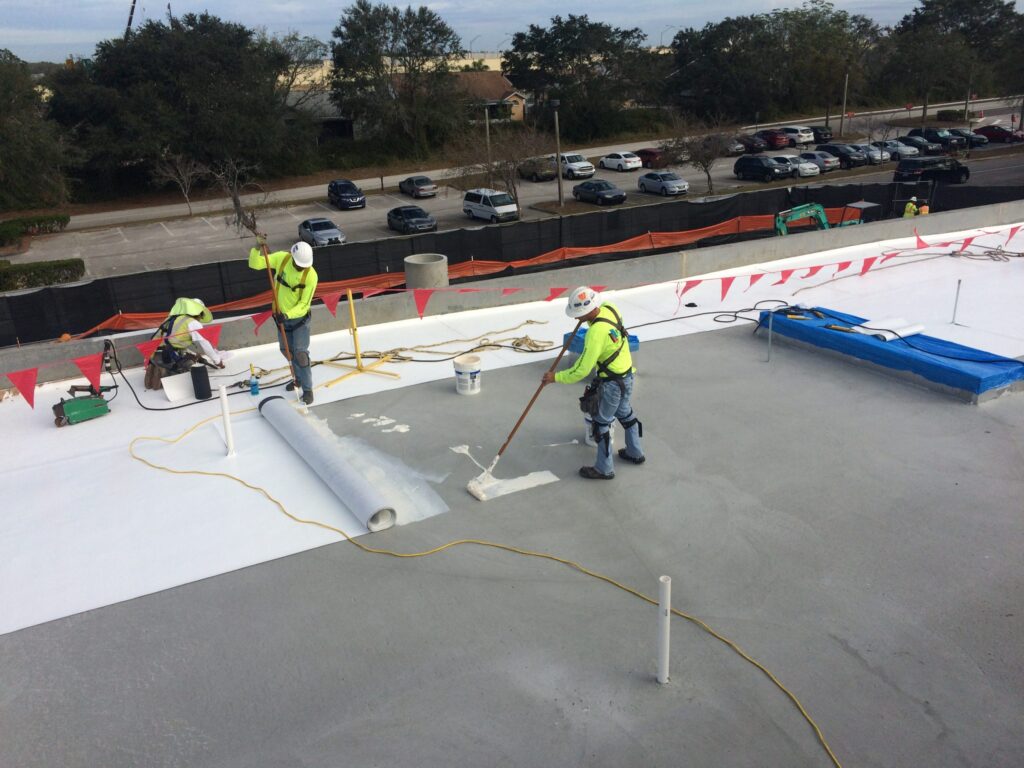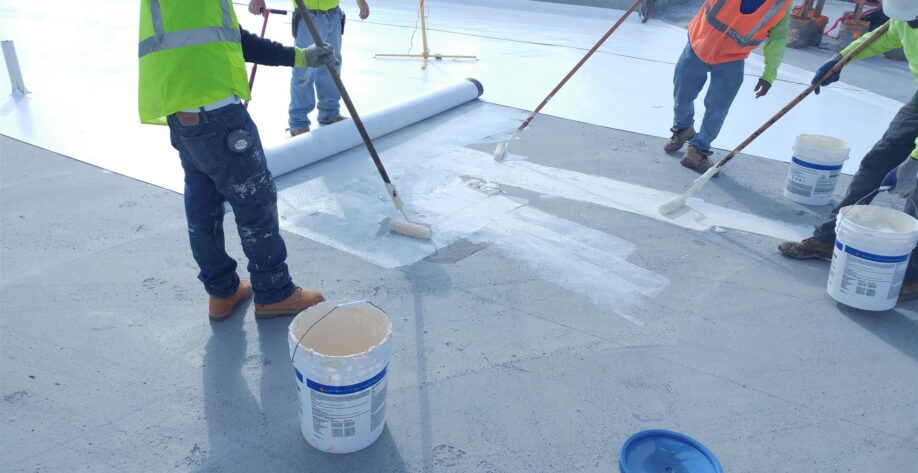
While southern states do not typically experience the same harsh winters as their northern counterparts, temperatures can often fall below 40°F in the South during the winter months (though cold does not typically last, and snow is rare). Southern winters create a unique challenge for local construction professionals who may not be prepared or are unaware of the considerations required to perform roofing operations when temperatures dip low during colder months.
Most roofing materials are not designed for cold weather installation. Many manufacturers specify that their products (particularly adhesives and sealants) should not be installed when temperatures fall below 40°F. Additionally, products are typically specified to be stored within a specific “warm” range prior to use. If products are not used in accordance to their specifications, they could potentially not perform as designed and even void the manufacturer’s warranty.
Single-ply membrane considerations during cold weather applications:
- Rolls of membrane become less elastic, and therefore require extra time to visually “relax” prior to installation.
- Condensation and frost formation can occur on the back side of the membrane.
- Blistering and rigid wrinkles could more readily form.
- Poor or false welds could occur during installation. Welding seams and laps should be performed slower and with extra care. Also, more weld tests should be performed, especially in the mornings and after long breaks, to gage the mating surface integrity.
- Many manufacturers recommend membranes be stored in heated areas and brought to the roof just prior to installation.
Precautions to consider when installing single-ply membranes in cold weather include the attachment method of the roof membrane to the underlaying roof system substrate (i.e. rigid insulation, gypsum coverboard, bare concrete, etc.). For lightweight insulating concrete (LWIC) decks, fully-adhering the roof membrane with a water-based adhesive is frequently the most used attachment method. Water-based adhesives are favored over other types because of their low VOC, ease of clean up, ability to spread, and versatility. However, because they are water-based, temperature considerations are important for the roof system’s long-term performance.
Water-based adhesive considerations for colder weather applications include the following:
- Longer cure time required for temperatures less than 40°F (as well as highly humid conditions). Most manufacturers specify for their adhesives to be applied only when temperatures are 40°F and rising, and the humidity is less than 90%. Cures can have a potential duration of two-to three days, which can be affected by freezing temperatures.
- Manufacturers typically specify that their products be stored at temperatures from 60-80°F, necessitating the need for a “hot box” on the roof or staging area.
- If adhesives and sealants do freeze, they will remain in the solid state even when warmed. The materials should be discarded and not attempted to be salvaged by mixing or reconstituting.
- Adhesives and sealants typically should not be used when the ambient temperature is expected to fall below the dew point during application, and up to six hours after, and if the forecast includes freezing temperatures within 48 hours of application.
- Shipments of water-based adhesives may be limited to certain geographic locations in colder weather months.
- Condensation on the surface of the adhesive will impact adhesion to the substrate.
- Application of adhesives should be scheduled near midday, when temperatures are their highest.
- The substrate being adhered should also be at 40 degrees Fahrenheit and rising.
- As construction may have stockpiles of water-based adhesive in their shops, confirmation from the manufacturer’s local representative should be provided for the acceptance of their product’s application on a project during forecasted cold spells.
Tagged In:
Building Enclosure Design & Consulting
